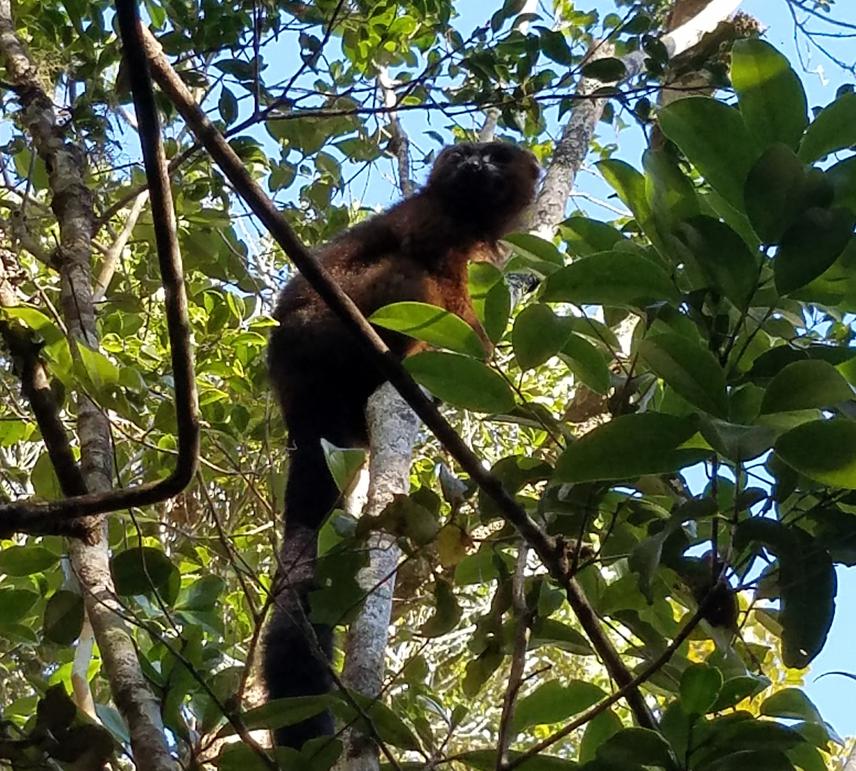Onja Harinala Razafindratsima
Other projects
2 Aug 2010
Functional Differences Within a Guild of Frugivorous Lemur Species: Impacts on Host-Plant Dynamics
4 May 2012
Effects of Habitat Disturbance and Edge on Diversity, Evolutionary Patterns and Dispersal Syndromes
Invasive species pose serious threats to biodiversity conservation. Strawberry guava, Psidium cattleianum, a highly aggressive invader of the tropics, has been spreading throughout the forests of Madagascar. However, comprehensive studies of the mechanisms and consequences of its invasion in Madagascar are lacking. We propose to examine whether animal-mediated seed dispersal facilitates the spread of strawberry guava, and in turn, how its invasion affects native floral and faunal communities along phylogenetic, spatial, and functional axes. Data will be obtained through field observations, experiments and genetic analyses. This project will provide important insights for managing invasive species in threatened habitats.

One of the lemur species dispersing guava seeds
Biological invasions of native communities by exotic species are among the top ecological problems the world is facing today. In forest ecosystems, invasion of non-native plant species can pose serious threat to biodiversity and ecosystem function. For instance, they can alter ecosystem functioning and reduce biological diversity by displacing native species. Strawberry guava, (Psidium cattleianum; Myrtaceae), an under-story tree and aggressive invader of tropical areas, has been rapidly spreading throughout Madagascar since its introduction from South America in 1806. However, comprehensive studies of its invasion of Madagascar’s forests are currently limited. The fruits of this species are consumed by animal frugivores, including birds and lemurs that frequent the disturbed habitats where it occurs; but we know relatively little about how animal-mediated seed dispersal affects its spread. Furthermore, despite the fact that strawberry guava displaces native under-story plants and provide a potentially important food source for native animals, little is known regarding how the establishment of this highly invasive species has affected faunal and floral communities in Madagascar.
Characterizing the mechanisms that facilitate biological invasions, and their consequences on the diversity and functioning of forest ecosystems are necessary for effective prevention, management and control.
This project seeks to examine whether animal-mediated seed dispersal facilitated the spread of strawberry guava in Madagascar’s rainforests, and, how its invasion affects native floral and faunal communities along phylogenetic, spatial, and functional axes. An integrative approach, combining data from field observations, experiments and genetic analyses will be used. This project will supply information on the relationship of strawberry guava with native and non-native animals such as lemurs, birds and rodents that might guide management and control programs. We will also provide the first, to our knowledge, comprehensive understanding of the impacts of strawberry guava on both floral and faunal communities. While a large body of literature has shown that invasive species can displace native species, we know relatively little about the consequences on community diversity and structure in Madagascar. In addition to advancing our understating of plant community ecology, biological invasions and ecosystem maintenance of a threatened habitat, this project is expected to provide important insights for managing and controlling invasive species in one of the most biodiverse habitats in the world. Given that Madagascar’s rainforests boast a plethora of endemic and evolutionary unique fauna and flora, understanding the mechanism and impacts of invasive species, which is one of drives of global changes, is crucial for biodiversity conservation in Madagascar.